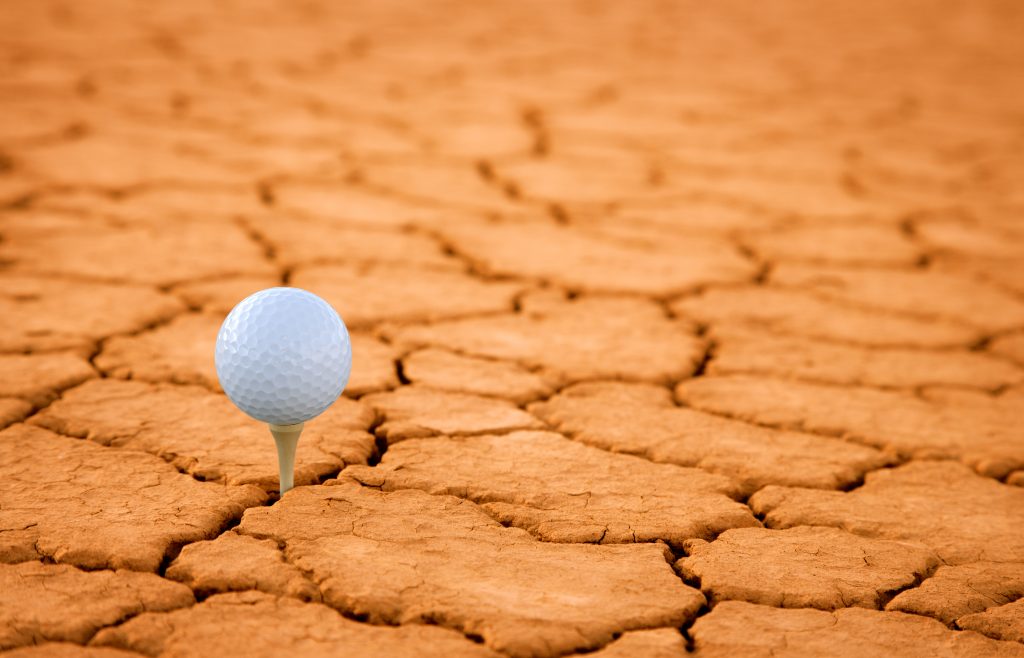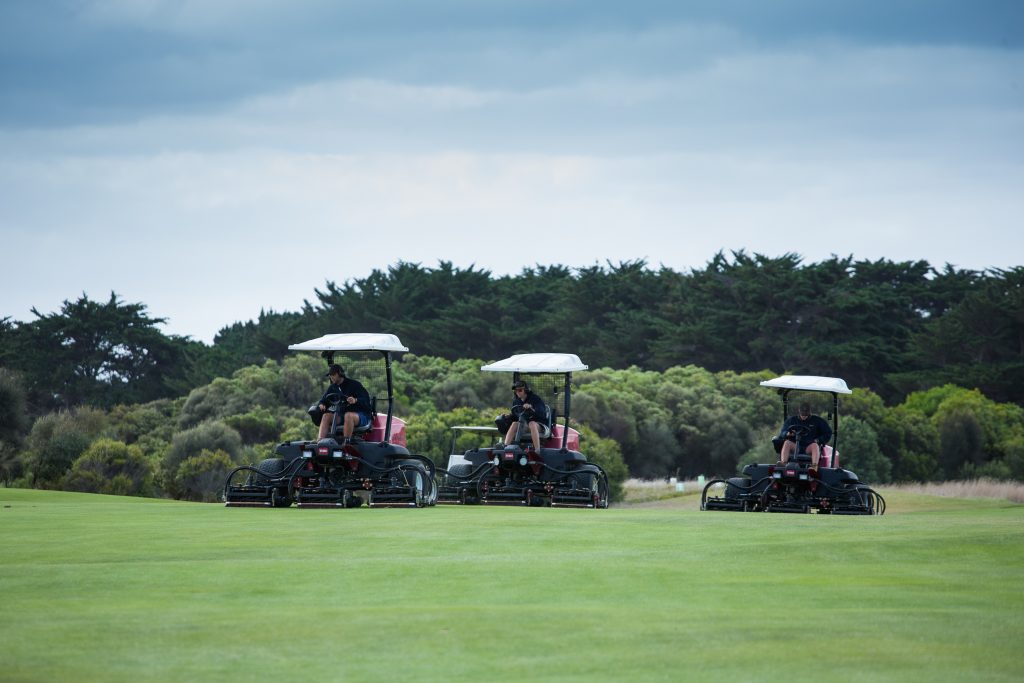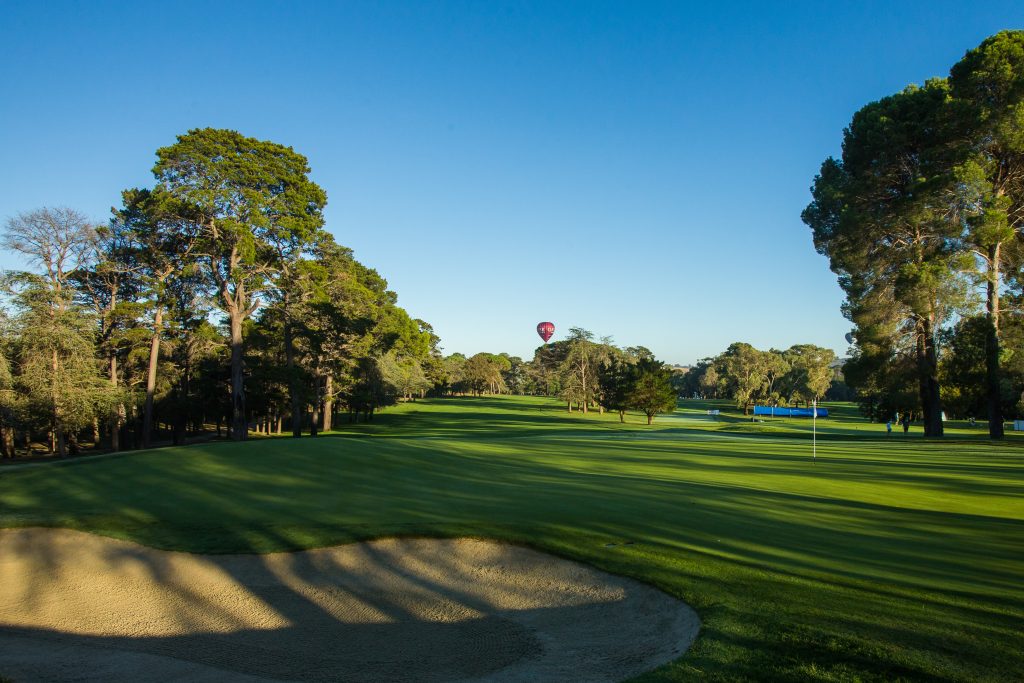What happens if we have another summer like 2018?
Related Articles
Almost every golf course in the UK was severely affected by the drought of 2018. Stella Rixon looks at why some courses – even those with drought-resistant species – suffered more grass cover loss than others, and looks at what most courses can do if there is another drought this summer.
If we look at the research work of Grime, Hodgson & Hunt (1988) Comparative Plant Ecology – A functional approach to common British species, on which ‘The Disturbance Theory’ is based, you will see it predicted the outcome of the 2018 drought pretty well. This study mapped the presence / absence of plant species, including some of our turf species, according to their environment.
Each environment was rated in terms of its level of stress, disturbance and competition, defined as:
Stress – anything that restricts growth, such as temperature, lack of light, low nutrients or moisture.
Disturbance – anything that physically breaks / reduces plant material, such as pests, disease, wear, mowing / brushing / verticutting and so on, loss of rooting due to compaction, wind or frost damage and also desiccation.
Competition – is an environment which has good growing conditions for plants (moisture, nutrients, warmth, light). In this environment, the most competitive plants (fastest growing, best able to capture the available resources) will dominate.
When it comes to where our key turf species sit within the environmental triangle, if stress is high (from lack of water, high temperatures) and we increase the disturbance (keep mowing, traffic, increasing desiccation as the ground dries out) then the grass species left will be ryegrass and annual meadowgrass, which establishes from seed once a break in the stress / disturbance allows.
This is largely what has been observed on courses across the country – turf death where stress and disturbance were extreme with ryegrass being one of the most resilient grasses to withstand the stresses. The resulting thinned turf quickly became colonised with annual meadowgrass once moisture returned in the autumn.

Factors affecting drought survival
In 2018, there were some courses that managed to retain their fine grasses, sometimes without irrigation! Most notable were the chalk downland sites, where the soil drains well but also have good moisture reserves. In addition, the higher pH favours plenty of microbial (and worm) activity to break down thatch and the waxy substances that cause hydrophobicity in soils: Suberin, a waxy substance produced by roots, is thought to be a key contributor to hydrophobic conditions.
Research shows hydrophobicity is more likely on sandy soils, soils with low pH and soils that dry down to a critically low moisture level, below which they quickly become hydrophobic. This perfectly describes our heathland sites, which explains why they had such a hard time of it last summer.
How much thatch is too much?
Thatch can obviously be an issue in preventing good water infiltration through the surface, but we do need some present. Vigorous dethatching to the point of thinning the sward is undesirable – fescue likes a settled environment. I would suggest around 20mm of thatch is acceptable in fescue / bent dominated fairways, provided water can pass through it. This can easily be checked via infiltration testing at the surface and / or checking for hydrophobicity using the water droplet test. This will quickly show you whether water is passing through the surface to where roots can access it. Hydrophobic conditions may be below ground rather than at the surface and therefore our efforts need to be directed at getting water deeper into the profile.
Case study: A heathland survivor
To understand the issues more fully, I returned to a heathland site, where we had undertaken a previous fairway study, to see how they fared.
Heathland club X is set on free-draining, acidic sandy loam soil. In May 2011, the club asked STRI to undertake a turf quality benchmarking study of three of their weakest fairways prior to installation of an automatic irrigation system, (in use from spring 2012). Three sample areas were marked on each fairway and assessed for percentage grass cover / bare ground, turf quality and sward species’ composition.

If stress is high from lack of water or high temperatures and mowing or traffic on the course is increased, then the grass species left will be ryegrass and annual meadowgrass, which establishes from seed once a break in the stress allows. © Tristan Jones
When first assessed prior to irrigation installation, the fairways were prone to severe drought stress causing significant loss of grass cover and thinned, patchy swards that were dominated by annual meadowgrass (Poa annua). This grass species is ubiquitous in the environment and highly present in the soil seed bank. It can quickly exploit bare areas left by drought stress, once moisture becomes available again in the autumn, but it also has poor drought tolerance and so dies out again in the summer. Hence an undesirable vicious circle occurred each year. Once irrigation was installed, it was used judiciously in combination with overseeding to maintain suitable moisture levels to promote desirable fine grasses and prevent extreme drought and loss of grass cover, hence keeping the opportunistic Poa out.
In June 2016, after four years of using fairway irrigation, the same sample areas on the fairways were re-assessed and the results compared, which were very favourable.
In 2019 I returned to the same sampling areas again to see how they had come through the 2018 drought. The fairways had coped very well indeed with no loss of grass cover to drought stress and retention of fescue dominant swards. The 16th fairway recorded a little more Poa annua than previously. However, it should be noted that this testing date was two to three months earlier in the season and this fairway is more shaded and moister in the winter months when the sun is low, due to trees along the south side. Therefore, it is likely that Poa increases in this particular fairway in the autumn and then reduces again in the summer as it dries out again.

Even on a dry site, low-lying or flat areas that are shaded are damper, and are more prone to compaction and meadow-grass invasion. Good drainage is therefore essential for successfully growing fescue-dominant swards. © Tristan Jones
So, an excellent outcome for the club and one that we can learn from. This club’s course manager talked us through his success:
The right site. Good drainage is essential for successfully growing fescue dominant swards. Even on a dry site, low-lying or flat areas that are shaded and therefore damper are more prone to compaction and meadow-grass invasion. Being able to avoid the extremes of too moist and too dry is a necessity.
Automatic irrigation. Installation of an automatic irrigation system helped the club to break the drought induced die-back and Poa annua succession cycles that used to occur on this dry site.
Overseeding. Once irrigation was installed, overseeding took place with desirable grass species (dominated by creeping red fescues) to fill in the thin swards. Irrigation was used to ensure successful germination, when rainfall was insufficient.
Retain full cover but avoid excess growth. Once full grass cover was re-established, it has been carefully managed to maintain existing cover but not produce excess growth and therefore avoid thatch build up. Fairways do not receive any nutrition so that clippings are not excessive and can be recycled back to the ground. This helps prevent drought stress. Due to the slow growth, there is very limited need to scarify, hollow core or top dress, as thatch is not excessive, and the low pH (5.0 or less) and dryness keep worm activity low. Regular divoting is undertaken with fescue but large scale overseeding is no longer necessary.
Wetting agent. A necessity for a dry site, a wetting agent is applied monthly from late March to early September on fairways.
Watering. Irrigation is used carefully, aiming to provide a less frequent, deeper soak, as opposed to daily light irrigation that will evaporate off. (This club is lucky that it has a summer abstraction borehole licence that provides sufficient water for this.)
Decompaction. Thorough and deep aeration is essential to ensure good water infiltration and rooting depth. Due to this club’s good drainage, the soil does not become overly compacted, in addition to this it has less than 30,000 rounds per year. The club generally does this this once, but sometimes twice, a year and ensures that a full depth of 250-300mm, with a small amount of heave, is achieved.
Stella Rixon is a senior agronomist at the STRI

























